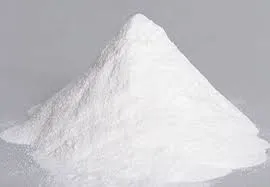
ডিসে. . 01, 2024 22:53 Back to list
hpmc vs hec
HPMC vs HEC A Comparative Analysis of Two Important Polymers
Hydroxypropyl methylcellulose (HPMC) and hydroxyethyl cellulose (HEC) are two prominent cellulose derivatives widely used in various industries, including pharmaceuticals, food, cosmetics, and construction. Both HPMC and HEC serve as important thickeners, stabilizers, and film-forming agents, but their unique properties and functionalities make them suitable for different applications. This article aims to compare these two polymers in terms of their chemical structure, properties, applications, and advantages.
Chemical Structure
HPMC is a modified form of cellulose where hydroxypropyl and methoxy groups are introduced into the cellulose backbone. This modification enhances its solubility in water, enabling it to function effectively in aqueous environments. The degree of substitution, which refers to the number of hydroxymethyl groups replaced by hydroxypropyl and methoxy groups, plays a crucial role in determining the properties of HPMC.
On the other hand, HEC is created by the reaction of ethylene oxide with cellulose. This process results in a polymer with hydroxyethyl groups attached to the cellulose chain, which provides excellent solubility and thickening properties. Both polymers retain the basic cellulose structure, but their different functional groups lead to varied interactions in solution and with other compounds.
Physical Properties
HPMC is known for its versatile viscosity profiles, which can be adjusted based on the grade and concentration. It can form gels and has an excellent film-forming capacity, making it a popular choice in numerous formulations. HPMC is also thermally stable, which enhances its utility in diverse applications.
HEC, in contrast, exhibits slightly lower viscosity compared to HPMC at similar concentrations. However, it is highly hydrophilic and can absorb a significant amount of water, leading to increased thickness in formulations. HEC also demonstrates great compatibility with various ionic and non-ionic compounds, making it a versatile thickener for different systems.
Applications
hpmc vs hec

In the pharmaceutical industry, HPMC is extensively utilized in controlled-release formulations due to its ability to form films and regulate drug release rates. Its smooth texture and stability make it an ideal excipient in tablets, capsules, and gels.
HEC is commonly employed in personal care products, including shampoos, conditioners, and lotions, as it provides a smooth, creamy texture. Its ability to stabilize emulsions and foams enhances the performance of cosmetic formulations. HEC is also widely used in construction materials, such as adhesives and tile grouts, where it improves workability and water retention.
Advantages and Disadvantages
Both HPMC and HEC offer significant advantages in their respective applications. HPMC stands out for its superior film-forming ability and controlled-release properties, making it the preferred choice for pharmaceutical applications. Its range of viscosity grades allows formulators to select the appropriate type for specific needs.
Conversely, HEC is favored in cosmetic formulations for its ability to enhance texture and stability. It is also generally less expensive than HPMC, making it a cost-effective option for various applications.
However, there are some limitations to consider. HPMC can be more difficult to solubilize than HEC, particularly in cold water, which may pose challenges in formulation processes. HEC, while versatile, may not provide the same level of film formation or controlled release found in HPMC.
Conclusion
In conclusion, HPMC and HEC are both valuable cellulose derivatives with distinct properties and applications. HPMC excels in pharmaceutical formulations due to its excellent film-forming capabilities and viscosity control, while HEC is widely used in cosmetics and construction for its thickening and stabilizing properties. Understanding the differences between these two polymers allows manufacturers to make informed choices, ensuring optimal performance in their products. As industries continue to evolve, the demand for both HPMC and HEC will likely remain strong, driven by their versatility and effectiveness in meeting specific formulation needs.
-
Unlocking the Benefits of HPMC Products: A Gateway to Versatile Applications
NewsAug.07,2025
-
Unleashing the Potential of HPMC Ashland: A Comprehensive Look
NewsAug.07,2025
-
Tile Bonding Cellulose: The Key to Superior Adhesion and Durability
NewsAug.07,2025
-
Hydroxypropyl Methylcellulose Powder: The Versatile Component in Modern Pharmaceuticals
NewsAug.07,2025
-
Hydroxyethyl Cellulose: The Versatile Solution for Various Industries
NewsAug.07,2025
-
Hydroxyethyl Cellulose (HEC): The Versatile Polymer for Various Applications
NewsAug.07,2025







